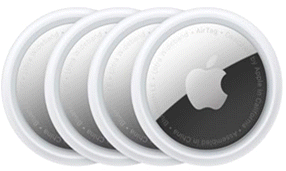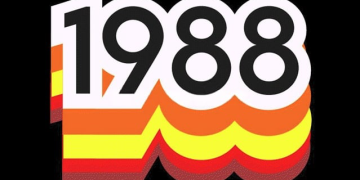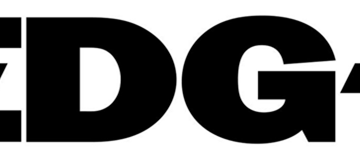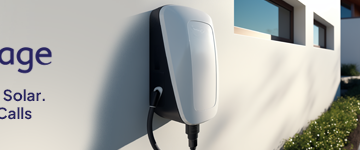Brianna Wessling
2025-07-15 10:36:00
www.therobotreport.com

Advanced Navigation used the data gathered from Hydrus to generate a 3D digital twin of the Hall Bank seabed. | Source: Advanced Navigation
Last month, Advanced Navigation deployed three of its underwater Hydrus drones in the Hall Bank reef in Western Australia. During the mission, the robots helped marine scientists discover devastating coral loss and discoloration.
Hall Bank is a small, nearshore reef off Fremantle in southwest Australia, located well beyond the typical latitudinal range for coral reefs. Advanced Navigation’s autonomous underwater vehicles (AUVs) conducted a detailed survey of the reef, capturing geo-referenced high-resolution imagery and 4K video in parallel.
The data showed severe coral bleaching and fragmentation, exposing an escalating crisis at one of the world’s southernmost reefs, the company said. Advanced Navigation completed the mission with the help of consultancy O2 Marine.
Dr. Alec McGregor, a senior AI engineer at Advanced Navigation, spoke with The Robot Report about the Sydney, Australia-based company‘s latest mission and its plans moving forward.
McGregor on tackling detailed mapping at sea
What challenges did you overcome in coordinating Hydrus’ survey patterns during the mission?
McGregor: One major hurdle was maintaining accurate positioning in areas with weak GNSS [Global Navigation Satellite System] signals or reduced DVL [Doppler velocity logger] and acoustic performance, especially near coral reefs and other complex subsea environments. We also had to carefully balance survey resolution with mission duration, which required meticulous pre-planning to ensure we captured high-quality imagery without exceeding operational limits.
Environmental variability, especially current-induced drift, also posed a significant challenge. This necessitated both real-time corrections and thoughtful mission planning to maintain consistent coverage and image quality.
What lessons did you learn during this survey that you can apply to future missions?
McGregor: Thorough pre-mission planning is critical, particularly in accounting for bathymetry, tide conditions, and light levels, all of which directly impact the success of the survey.
It is also essential to incorporate adaptive mission logic into Hydrus. This means giving it the flexibility to recover or replan when it encounters unexpected conditions, to significantly improve mission resilience.
Finally, having efficient image-processing pipelines, supported by robust QA/QC [quality assurance/control] steps, proved invaluable in improving both post-mission productivity and the overall quality of resulting models.
Advanced Navigation partners with O2
What was O2 Marine’s role and responsibilities in the mission, and how closely did you work with its team?
McGregor: As a marine consulting company, O2 Marine’s ambition lies in aiding businesses to accelerate efforts in marine environmental assessment and monitoring, marine fauna, and oceanography.
As O2 Marine looks to secure new business opportunities and expand global conservation efforts, they need to enhance the accuracy and depth of their own environmental and sustainability analyses. This necessitates the use of advanced technology that captures both the scale and the fine detail of change beneath the ocean surface.
This is where Hydrus came in. The survey was carried out collectively by Advanced Navigation and O2 Marine, with a goal to demonstrate Hydrus’ capability to collect data and insights for knowledge-sharing in a cost-effective way.
After the underwater survey, Advanced Navigation worked on post-processing the data captured on Hydrus and building the 3D digital twin. Given the impressive results, O2 Marine will integrate Hydrus into critical real-world projects for impact assessment investigations with its global partners.
Advanced Navigation’s recent technology developments
How is Advanced Navigation utilizing recent advances in AI, like large language models, or LLMs, in its work?
McGregor: We have been using convolutional neural network — CNN — for object detection and classification on board Hydrus. LLM is a new area we are exploring to see how it can add value to Hydrus, especially in the mission-planning, execution, and post-processing phases.
As you look towards more deep-sea missions, how are you preparing Hydrus to handle more challenging environments?
McGregor: A key focus area is adding more onboard intelligence by integrating AI-driven navigation and adaptive survey behavior, allowing Hydrus to respond dynamically to unexpected terrain or GNSS or acoustic signal loss.
We’re also looking into robust hardware updates, particularly around pressure tolerance, so Hydrus can operate reliably in deeper and harsher underwater conditions. These upgrades will be complemented by ongoing real-world testing in progressively more demanding environments, helping us to identify and resolve edge-case failure modes well before commercial deployment.
McGregor on what’s on the horizon for Hydrus
Does Advanced Navigation have any future Hydrus missions planned that you can tell me a bit about?
McGregor: Recently, Hydrus was deployed across shallow reefs off the coast of the Florida Keys, as part of an activity to support NOAA’s coral reef photogrammetry and ecosystem monitoring efforts.
A total of 66 missions were completed with a 92.4% success rate. The surveys focused on high-resolution photogrammetry, as well as validating navigation, calibrating scale bars to acoustic scaling, and testing real-world endurance in challenging conditions.
Beyond the numbers, the project reinforced the notion that coral reefs are critical infrastructure – they protect our coastlines, support local economies, and hold immense ecological value. Hydrus will continue to help scale how we monitor, map, and understand these vital systems – efficiently, affordably, and without the need for large surface support vessels.

Keep track of your essentials with the Apple AirTag 4 Pack, the ultimate tracking solution for your belongings. With over 5,972 ratings and a stellar 4.7-star average, this product has quickly become a customer favorite. Over 10,000 units were purchased in the past month, solidifying its status as a highly rated Amazon Choice product.
For just $79.98, you can enjoy peace of mind knowing your items are always within reach. Order now for only $79.98 at Amazon!
Help Power Techcratic’s Future – Scan To Support
If Techcratic’s content and insights have helped you, consider giving back by supporting the platform with crypto. Every contribution makes a difference, whether it’s for high-quality content, server maintenance, or future updates. Techcratic is constantly evolving, and your support helps drive that progress.
As a solo operator who wears all the hats, creating content, managing the tech, and running the site, your support allows me to stay focused on delivering valuable resources. Your support keeps everything running smoothly and enables me to continue creating the content you love. I’m deeply grateful for your support, it truly means the world to me! Thank you!
|
BITCOIN
bc1qlszw7elx2qahjwvaryh0tkgg8y68enw30gpvge Scan the QR code with your crypto wallet app |
|
DOGECOIN
D64GwvvYQxFXYyan3oQCrmWfidf6T3JpBA Scan the QR code with your crypto wallet app |
|
ETHEREUM
0xe9BC980DF3d985730dA827996B43E4A62CCBAA7a Scan the QR code with your crypto wallet app |
Please read the Privacy and Security Disclaimer on how Techcratic handles your support.
Disclaimer: As an Amazon Associate, Techcratic may earn from qualifying purchases.








































































































